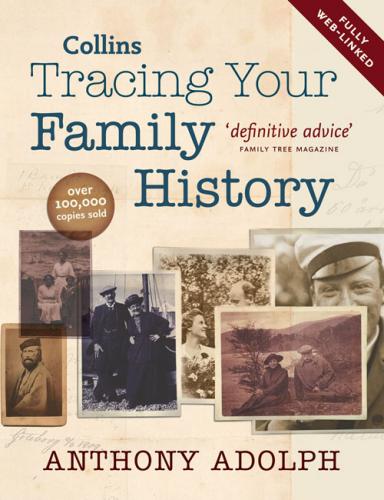THE POWER OF PAPER
Don’t forget, though, that younger relations of yours may have been told things by much older relations who are now dead. Equally – and here we leave the realms of oral history and move on a step – they, like the elderly, may have family papers and heirlooms. These come in so many forms: letters, school reports, memorial cards, passports, vaccination and ration cards, and so on, all crowned by the queen of all family papers, the family bible.
My grandfather’s air raid warden card. Note that he had been appointed before the war, in 1938.
Some bibles can be centuries old, faithfully recording the births, marriages and deaths of each member of the family. The tip to finding family bibles is to trace down the female-to-female line of the family, as they are often passed from mother to daughter. Lost or unwanted ones (how can anybody not want a family bible?) often end up at car boot sales and genealogical magazines have been known to publish letters from well wishers who have found such a bible, describing its contents and volunteering to return it to the right family.
Whether it’s a family bible or a 70-year-old funeral bill, write down all the salient details (or, better still, photocopy everything) because such papers may contain clues that will only become useful to you long afterwards. Ignore such advice at your peril and, if you have to go back all the way to Wigan to have another look at your cousin’s grandmother’s address book you didn’t bother with ten years ago, don’t blame me.
Pages from the Fairfax family bible, which even includes an extra newspaper cutting.
Actually, the real prize transcends even that, because sometimes you will find that an ancestor will already have tried to trace the family tree. One of the things that really encouraged me to pursue my own was being given a Harrods’ carrier bag full of ‘the family papers’, which turned out to be my great-great grandmother’s notes, showing her attempts to trace her family tree between 1880 and 1920. Sadly there was no sign of her finished family trees – if there ever were any – and nor have they ever turned up. However, the bag did include replies to letters she had written to her second and third cousins, thus filling out my own family tree before I had ever set foot outside my front door.
Family reunions: a family photograph showing the Adolph, Mitchiner and Gale families celebrating the 80th birthday of my grandfather Joseph Adolph in 1990.
AN OUTLINE OF THE MAIN SOURCES
PRELIMINARY RESEARCH
BASIC RESEARCH
MORE IN-DEPTH RESEARCH
